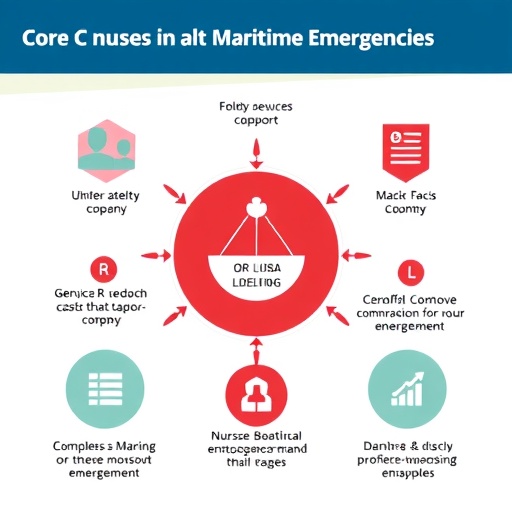
A groundbreaking retrospective study now sheds new light on one of the most pressing and tragic issues afflicting young populations worldwide: suicide among individuals under the age of 30. Published in the International Journal of Legal Medicine, this comprehensive analysis scrutinizes patterns, risk factors, and underlying circumstances driving this devastating phenomenon. As global suicide rates among youth continue to alarm public health officials and communities, the research undertaken by Blandino, Sbrissa, Flutti, and colleagues promises to deepen our understanding and potentially reshape preventive strategies.
The investigation delves into a detailed examination of suicide cases recorded over several years, focusing exclusively on subjects younger than 30. This age bracket is critical, representing a vulnerable segment undergoing significant psychological, social, and developmental transitions. The heterogeneous nature of this group—from adolescents on the cusp of adulthood to young adults navigating complex societal pressures—demands specialized attention. The study’s retrospective design allows researchers to meticulously analyze existing data, offering retrospective insights that might otherwise be obscured in real-time observations.
Central to the study is the elucidation of suicide modalities employed by young individuals. The data reveal a stratification of methods, with some being more prevalent depending on demographic variables such as age subgroup, gender, and socio-economic background. Importantly, the researchers highlight how access to lethal means correlates strongly with the chosen method, emphasizing the importance of policy and environmental controls in suicide prevention. For instance, firearms or toxic substances appear disproportionately in certain subpopulations, underscoring the need for tailored regulatory frameworks.
.adsslot_u0UP4jEXTq{width:728px !important;height:90px !important;}
@media(max-width:1199px){ .adsslot_u0UP4jEXTq{width:468px !important;height:60px !important;}
}
@media(max-width:767px){ .adsslot_u0UP4jEXTq{width:320px !important;height:50px !important;}
}
ADVERTISEMENT
Beyond the specifics of method, the retrospective analysis immerses into psychosocial contexts surrounding each case. Mental health disorders emerge as a primary driver, with depression, anxiety, and substance use disorders conspicuous among the medical histories documented. The research underscores that clinical diagnoses alone cannot comprehensively explain suicide risk: multifaceted layers of trauma, familial discord, social isolation, and academic or occupational stress also feature prominently. This multidimensional risk landscape points to the critical need for integrated mental health and community support services.
One of the study’s novel contributions lies in its forensic approach to suicide classification. Traditional dichotomies, such as intentional versus accidental death, are reassessed with forensic rigor, revealing classification ambiguities in official records. By refining criteria for case inclusion, the authors reveal underreported cases and misclassifications that could skew epidemiological understanding. Such forensic clarity enhances the precision of public health data and could bolster targeted interventions.
Technological advancements played a pivotal role in data processing and analysis. The authors utilized sophisticated computational tools, including machine learning algorithms, to parse large datasets and extract nuanced patterns not readily apparent through conventional statistical methods. This analytical sophistication allows for a more granular understanding of temporal trends, geographic clustering, and behavioral antecedents, thereby elevating the epidemiological narrative surrounding youth suicides.
Another critical dimension the paper explores is the intersectionality of risk factors. The synergy between mental illness, substance misuse, and socio-environmental stressors is exhaustively detailed, illustrating how overlapping vulnerabilities exponentially increase suicide risk. Moreover, gender-specific analyses reveal marked differences in both prevalence and precipitating factors, challenging one-size-fits-all prevention approaches. Young males tend to demonstrate higher suicide completion rates, often employing more lethal means, while females show higher rates of suicide attempts, suggesting differentiated needs in clinical outreach.
The paper also intricately discusses the sociocultural factors that influence suicidal behavior among youth. Cultural stigmas confounding mental illness, lack of awareness, and varying degrees of familial or community buffering all emerge as significant determinants in the progression toward suicidal crises. This cultural lens is pivotal for translating epidemiological findings into culturally sensitive prevention programs, emphasizing community engagement alongside clinical intervention.
Importantly, the authors highlight temporal trends over the study period that reflect changes in societal dynamics and mental health service availability. Increasing exposure to digital technologies and social media platforms is discussed as a double-edged sword—providing both avenues for connection and exacerbating risks through cyberbullying, social comparison, and misinformation. These digital dimensions add complexity to the already multi-layered risk environment, demanding innovative prevention models adapted to the digital era.
The research calls for improved surveillance systems that integrate forensic data with clinical and social information to create real-time, actionable intelligence. The integration of multidisciplinary data streams promises to enhance early detection and intervention efforts, potentially curtailing suicide rates more effectively. This holistic surveillance approach advocates collaborative frameworks among forensic pathologists, mental health professionals, educators, and policymakers.
Policy implications arising from the study cannot be overstated. The findings substantiate the need for youth-centered mental health services, expansion of crisis intervention programs, and fortification of protective socio-environmental factors, including educational outreach and family support systems. The research also validates ongoing initiatives aimed at restricting access to highly lethal means of suicide, reinforcing evidence-based policy advocacy.
The authors conclude with an urgent call for future research that incorporates longitudinal designs and prospective cohort studies. While retrospective analyses offer critical snapshots, understanding causal pathways and the dynamic evolution of risk necessitates following individuals over time. Such prospective studies would permit elucidation of protective factors and resilience mechanisms amongst youth, potentially informing preventative innovation.
In sum, this retrospective analysis stands as a seminal work in the forensic and clinical understanding of suicide among young individuals. Its meticulous data-driven approach, integrated technological analysis, and nuanced examination of psychosocial complexities provide a roadmap for both researchers and practitioners. As the global community grapples with rising youth suicide rates, studies like this offer hope that through precision, collaboration, and innovation, lives may be saved.
The profound societal significance of this research is not just in its numbers or categories but in its potential to alter the course of countless young lives. By comprehensively mapping the terrain of youth suicide, Blandino and colleagues have laid a foundation for strategic interventions that transcend traditional boundaries, combining forensic precision with compassionate care.
Subject of Research: Suicide in individuals under the age of 30
Article Title: Suicide in subjects under the age of 30: a retrospective analysis
Article References:
Blandino, A., Sbrissa, L.P.E., Flutti, E. et al. Suicide in subjects under the age of 30: a retrospective analysis. Int J Legal Med (2025). https://doi.org/10.1007/s00414-025-03546-7
Image Credits: AI Generated
DOI: 10.1007/s00414-025-03546-7
Keywords: youth suicide, forensic analysis, mental health, suicide prevention, epidemiology, suicide methods, psychosocial factors
Tags: adolescent mental health issuesdemographic analysis of youth suicideglobal youth suicide statisticspreventive strategies for youth suicidepsychological factors in youth suicidepublic health and youth suicideretrospective study on suiciderisk factors for young suicidesocio-economic influences on youth suicidesuicide methods among youthyoung adult suicide ratesyouth suicide trends





